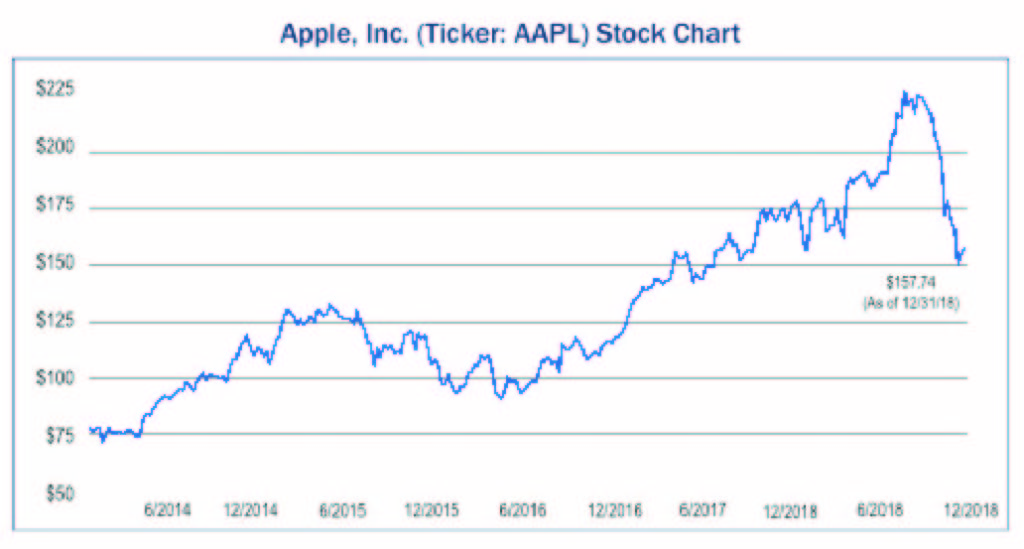Company Spotlight: Apple, Inc. (AAPL)
By Ted Hart
Today it is more prudent to think about Apple (AAPL) as a consumer discretionary or consumer staple company rather than a technology hardware company. Despite popular belief, Apple is rarely the innovator for each product category; they simply improve ease of use and product appeal. Starting with the MP3 player, Apple redesigned and released their version with the iPod. In 2007, Apple “connected the dots” with the iPhone, merging the cell phone, the Palm Pilot and the MP3 into one device – all the while keeping the device small and sleek. The iPad came soon after, capturing many of the already iPhone customers. Finally, the launch of the Apple Watch in 2015 was introduced as nothing other than a luxurious item. CEO Tim Cook alongside supermodel Christy Turlington Burns released the watch at the Apple Developer Conference. The release was followed by a twelve-page advertisement in the popular fashion and lifestyle magazine Vogue.
The core of Apple’s profits continues to be the iPhone and the price tag it commands. In 2016, Apple’s market share of the smartphone market was 14.5%, second only to Samsung with 20.8%. However, Apple accounted for 79% of smartphone profits. The iPhone’s presence as a luxury item became especially evident in the third quarter. Unit sales were flat year over year while iPhone sales grew 29% bringing the average selling price to $793, up from $618 in the same quarter in 2017.
Although it appears growth in new iPhone customers is waning, the hundreds of millions of recurring customers will probably continue to upgrade their phones assuming Apple’s minor innovation to each new model endures and competition for a luxury smartphone remains minimal. Secondly, many customers have become attached to the iOS software and will likely continue to buy future iPhones given their ease with their current smartphones. This could be seen as recurring revenue similar to what Microsoft received from Windows software upgrades in the early 2000s.
In addition, Apple’s Services business is an actual subscription model with the likes of the App Store, Apple Music ($9.99/month), iCloud ($0.99/month for 50 GB), Apple Care and Apple Pay. In the most recent quarter, Services sales surged 24% year over year with the App Store, Cloud Services, AppleCare, Apple Music and Apple Pay all reporting record revenues. Paid subscriptions also reached over 330 million users. With paid subscriptions now at this impressive level, that trend isn’t likely to fizzle out anytime soon.
So what does all this mean for the current (and prospective) Apple shareholder? In short, it means re-conceptualizing Apple’s role in the marketplace, and re-calibrating growth expectations accordingly. Rather than waiting for Apple to invent “the next Big thing,” analysts and investors alike would do well to judge the company against its true strengths: pricing power, customer retention and a knack for sticky and diverse streams of recurring cross-sell revenue. While this view would perhaps undercut the narrative of “Apple magic,” it would also permit a franker, more clear-eyed discussion of one of the country’s most prominent stocks. And that’s a luxury we can all afford.




